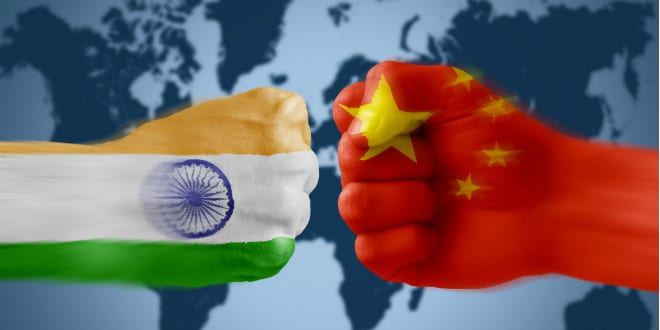International powers are beginning to choose sides in the border dispute between China and India over the highest altitude real estate in the world. Though a “positive consensus” has been reached, this particular border has a long history of conflict.
Each side is accusing the other of overstepping the long-disputed Line of Actual Control (LAC) that separates the two countries in the Himalayas.
Despite beginning their new independent incarnation in 1947 wth claims of brotherhood with China, the border dispute has been a large source of contention between the two countries. After a peace agreement was reached in 1950, war broke out in the area between China and India in 1962. After a period of calm, border clashes in 1967 culminated in the withdrawal of Chinese military forces. In 1993, the two countries signed an agreement on the “Maintenance of Peace and Tranquility” along what is known as the Line of Actual Control along their border.
Tensions nearly escalated into a military conflict in 2017
The countries share a 2,170-mile border. In all, China claims some 90,000 square kilometers of territory in India’s northeast, including the Indian state of Arunachal Pradesh with its traditionally Buddhist population.
India says China occupies 38,000 square kilometers of its territory in the Aksai Chin Plateau in the western Himalayas, including part of the Ladakh region.
This situation threatened to escalate once again in May when military confrontations resulted in several wounded. Thousands of soldiers from the two countries have been facing off just a few hundred yards from each other for a month in the Indian-controlled Ladakh region. The Chinese People’s Liberation Army (PLA) has conducted large-scale exercises in the region this month as well.
A few days ago, China tried to deter India from completing the Darbuk-Shyok-Daulat Beg Oldi road, which, when complete, will give India a major advantage in terms of access and military mobilization.
On Wednesday, China announced the two countries had reached a “positive consensus” to de-escalate the standoff.
Recent tensions between the US and China over COVID-19 and claims of Chinese theft of US intellectual property have brought Washington and Delhi closer together. Australia, which has played a leading role in calling for Chinese accountability for the coronavirus, has also allied with India in the recent tensions.
Source: Israel in the News

